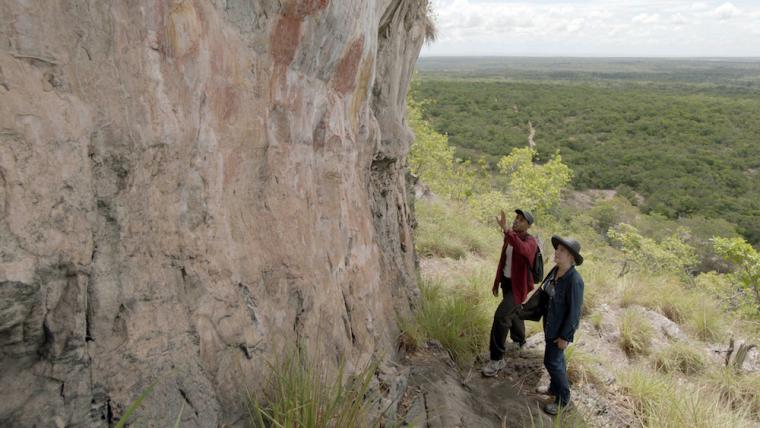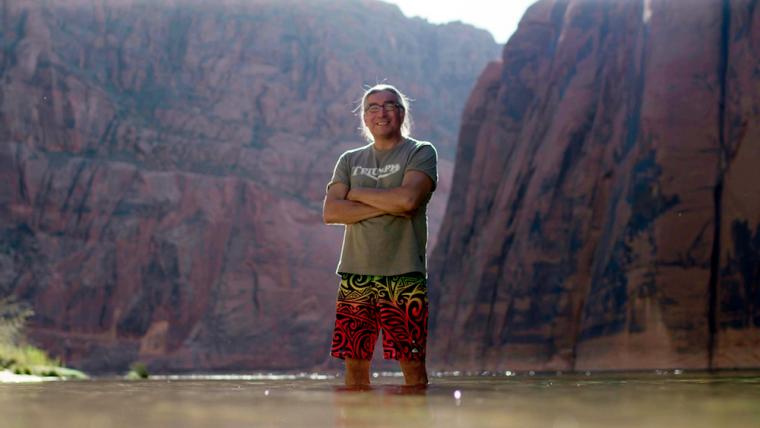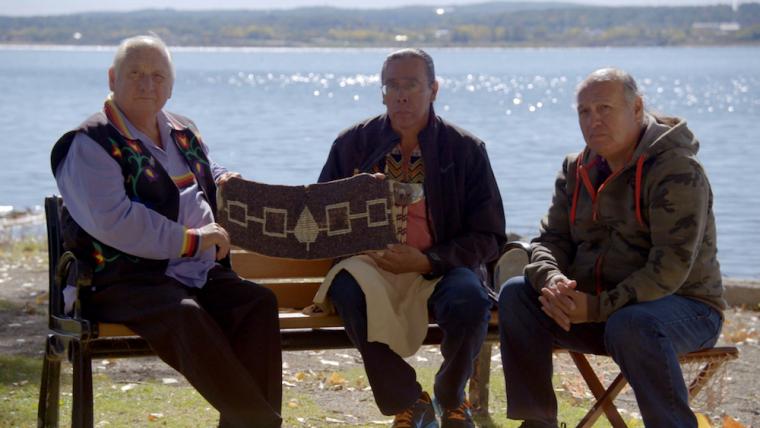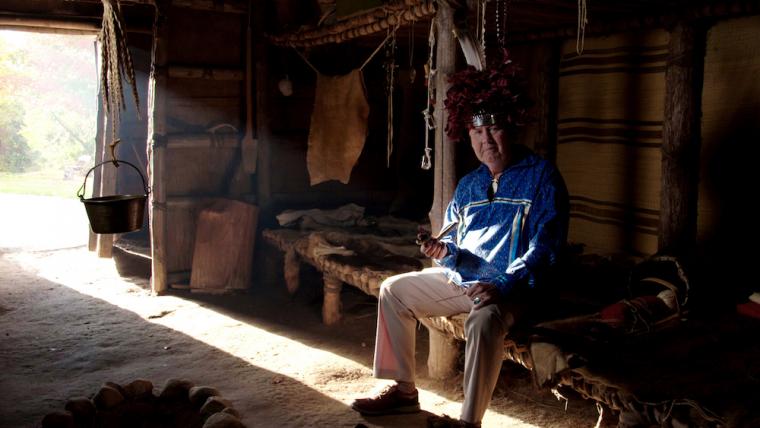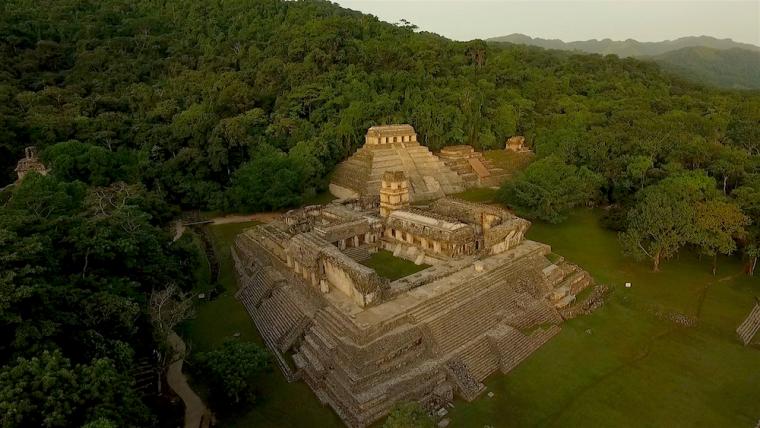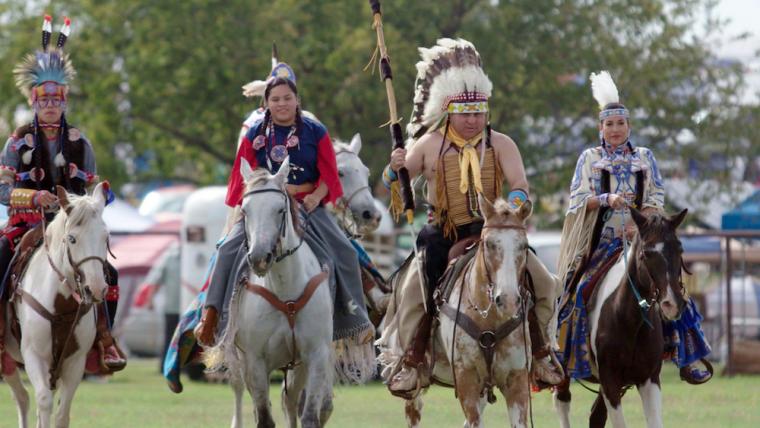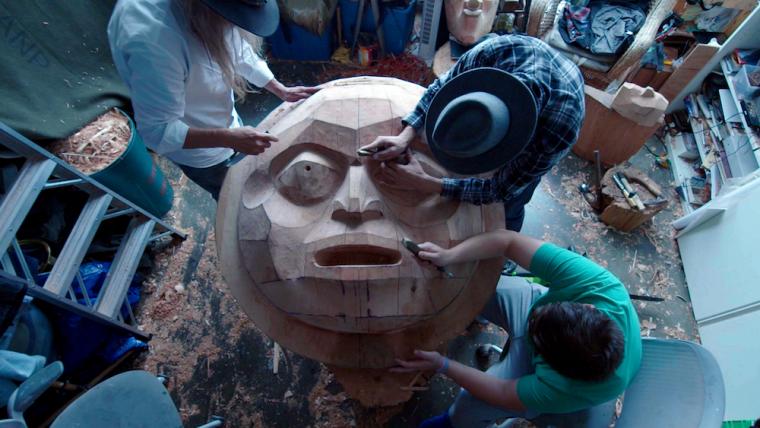Much of the world has understood Indigenous peoples and the histories of the Western Hemisphere through specifically colonial, European perspectives for centuries. Native America, a four-part series from Providence Pictures airing on PBS this fall, aims to redirect the lens on these narratives. The series will run four consecutive Tuesday evenings starting Oct. 23, 2018, from 9-10 p.m. EST. The documentary-style series features conversations with Native peoples from British Columbia to Peru about Indigenous cosmology and astronomy as well art, oral histories and writing systems. It also highlights the observations and studies of Native and non-Native scholars and archaeologists, as well as community-based knowledge keepers. Mohawk musician Robbie Robertson of the rock group The Band narrates each hour-long installment.
The series is one part of a larger educational effort by PBS and its Learning Media sector. Through teacher resources and lesson plans, according to PBS “the ultimate goal…will be to bring a more rounded study of Native American history and achievement into classrooms around the country.” Gary Glassman, executive producer and director of Providence Pictures, reflects, “I can no longer look at this land without thinking of the millions of Native Americans who created a world in which people lived as family with all living things and that their way of life still has the power to make a more just and sustainable future.”
Reflecting on the significance of the PBS series to a broad television audience, G. Peter Jemison (Seneca), an authority on Haudenosaunee history and series contributor, writes, “Places separated by geography and people separated by hundreds of years find they still have stories; oral traditions that link them. The beauty and astounding knowledge our people had and still have are what the filmmakers have attempted to portray.”
The first episode titled From Caves to Cosmos features some of the earliest rock art in the Western Hemisphere at the Cave of the Painted Rock in the Monte Alegre hills in Brazil, dating to around 13,000 years ago. It is discussed by Dr. Anna C. Roosevelt and Dr. Christopher S. Davis of the University of Illinois at Chicago. Dr. Roosevelt observes that, “The Monte Alegre rock art...shows that the Paleoindians made exhaustive and accurate observations of the motions of the heavens but chose to ‘see’ them as the heroes and deities of their creation scenario. Thus, scientific understanding, which is also manifest in Paleoindians’ local ecological adaptations, is something the Indians merged with their conceptual and aesthetic understandings, creating a true monument of art iconography that still exists today, so many thousands of years later.”
Early Americans were intimately aware of the movements of the sky and were able to document such knowledge. The story continues at the imposing and awe-inspiring Grand Canyon in the southwestern U.S. Jim Enote (Zuni), CEO of the Colorado Plateau Foundation, is working with Octavius Seowtewa (Zuni) to study petroglyphs, or rock carvings, created thousands of years ago. Enote has hired Native painters to transform Zuni history into illustrated maps. He explains, “We looked at these kinds of petroglyphs and other kinds of images on ceramics, things that were woven in tapestries. We thought about the songs and prayers we have, and we decided that we can make our own kinds of maps.” They “represent the world without defined boundaries” and are unlike the “geometric maps with streets and roads” to which people may be more accustomed. “When they see Zuni hand-painted maps, they realize there is a different way of looking at the world,” he says.
The second episode, Nature to Nations, explores America’s first democracy, founded around the year 1150 by the Haudenosaunee (Iroquois) people of present-day upstate New York and Canada. The Hiawatha Belt depicts the joining of the five Haudenosaunee nations under the Great Law of Peace, which provides instructions on the treatment of others, the preservation of a democratic society and the importance of reason in maintaining peace. It is made of wampum, meaning “white shell beads” in the languages of the Narragansett of Rhode Island and Wampanoag of Massachusetts. They are made of quahog clam and whelk shells carefully crafted into beads, woven into belts and placed on other items.
According to the Haudenosaunee, wampum has the power to heal, hold memories and create bonds between nations, as the Hiawatha Belt has done. The Peacemaker, sent from the Creator and a prophet of peace, worked with Hiawatha, a grieving warrior and one of the Peacemaker’s first disciples. Hiawatha’s daughters were killed by the dark magic of the Onondaga warlord, Tadodaho. Eventually, with the help of Jigonsaseh, the first clan mother, Tadodaho was able to accept peace and appointed the Keeper of the Central Fire. The Peacemaker assembles the chiefs from each nation; each bring wampum and the Peacemaker weaves the strands into one belt – The Hiawatha Belt. From left to right, the following nations are represented in the Hiawatha Belt: Seneca, Cayuga, Onondaga, Oneida and the Mohawk. The Tuscarora, currently the sixth nation, joined in the early 1700s after the Belt was created. G. Peter Jemison (Seneca) speaks of the importance of the return of the Hiawatha Belt from the State of New York back to the community: “To explain the Belt’s significance we created a Haudenosaunee Grand Council with the youth. They learned how a question is introduced to the Grand Council, how it is reviewed, by whom in the process and how a decision is arrived at. They learned the considerations Chiefs must be mindful of when making decisions…. It is my belief that we brought life back to the Hiawatha Belt that had been away from Haudenosaunee hands for a hundred years. The Belt, in turn, educated us as to its importance.”
The third episode titled Cities of the Sky concentrates on the immense knowledge and reverence that Indigenous people have for astronomical bodies. Such understandings are accepted as spiritual relationships that are reflected physically on the landscape; examples shown in the documentary include the ancient city of Cahokia, near St. Louis, Mo., built by predecessors of southeastern tribes, and large stone structures like the Governor’s Palace built by the Maya at the Uxmal site in Mexico.
The fourth episode New World Rising focuses on the survival of Native nations today following centuries of coordinated and deliberate invasion by colonizers. The Comanche’s connection to and reverence for the horse is discussed in-depth, as the introduction of the animal by Spanish explorers changed nearly every aspect of Plains tribal lifeways.
The Florentine Codex, a 12-volume encyclopedia created by Aztec artists about the history and culture of their people, was commissioned by Spanish friar Bernardino de Sahagun in the 1540s and completed approximately 30 years later, in an effort to “understand” Aztec ways and methodically destroy them. The elaborately decorated Codex also chronicles the gory details of the Spanish conquest in the Nahuatl language.
By emphasizing significant facets of Native cultures, the series underscores the messages that Native America is our America. Native contributions sustain our everyday lives, from the physics of suspension bridges created by the Inka to food staples such as corn, developed by Mesoamerican farmers. The series also inquires about how contemporary Native people connect to the world around them and to prior generations. The late Beau Dick, a Kwakwaka’wakw artist and carver, remarks: “There’s a certain relationship that our people have with the cedar tree. It reconnects us with our ancestors, with our story, with our identity. And, it’s just really sacred to us…. My grandfather did that. My great grandfather did that. My great-great-great grandfather did that.… I’m following their footsteps. And, that’s really personal and we share that. We’re following what was provided by our ancestors and the relationship they had with the Creator.”
According to Dr. Roosevelt, “Native America can show audiences the diverse, intricate and effective cultures that allowed the first people to make the continent their own. Their achievements are truly impressive, and I feel these aspects of their history are made clear in the series. Although many Americans do know about the cultures, there are some that seek to denigrate them for various reasons – ranging from competition for land and resources to racial nationalism and simple ignorance. The series makes clearer to the viewer how the Native cultures integrated specialized knowledge about their habitats and societies into formulations that are some of the great art styles of the world.”

